
| Publisher: | Plume | |
| Genre: | Fiction, Romance, Historical | |
| ISBN: | 9780452297678 | |
| Pub Date: | December 2011 | |
| Price: | $15 |
| Fiction |
by Sarah Jio
At 91, Anne Calloway Godfrey has lived a seemingly fulfilled live, but when her granddaughter brings her a mysterious letter from Tahiti--a letter that was almost thrown away--a tidal wave of memories and regret seven decades in the making is unleashed. The Bungalow is the story of Anne's time in Tahiti, where she served in the Army Nurse Corps during World War II. Frustrated by her friend Kitty's preference for play over work, the young, engaged Anne suddenly finds herself in a passionate romance with a soldier named Westry. They meet regularly in a bungalow where an unknown French artist once lived--a bungalow the natives believe is cursed. Both Anne and Westry dismiss the curse, until they witness a gruesome murder at the bungalow's doorstep.
Sarah Jio is skilled at writing engaging characters, and with Anne, she employs a pleasant, conversational tone that holds the reader spellbound. Anne's bittersweet, nostalgic reminiscences come, at times, with a bit of literary license, but Jio's ability to weave an intricate storyline that lovingly envelops her characters allows for such liberties. This expertise is most evident in the building of suspense that surrounds the unsolved murder mystery. Fans of Nicholas Sparks are sure to enjoy this heartwarming novel. --Sarah Borders, librarian, Houston Public Library

| Publisher: | Tin House | |
| Genre: | Fiction, Literary | |
| ISBN: | 9781935639206 | |
| Pub Date: | January 2012 | |
| Price: | $10.95 |
| Fiction |
by Alexis Smith
There are many novels set over a single day, from Ulysses and Mrs. Dalloway to Under the Volcano and Saturday. Debut novelist Alexis Smith contributes to their ranks with the beautiful Glaciers, which depicts a day in the life of 20-something Isabel and her experiences in Portland, Ore., with flashbacks to her years growing up in Alaska. One such recollection, of a ferry ride, leads her to reflect on calving, that moment "when part of a glacier breaks free and becomes an iceberg--a kind of birth," and then the shouts from her fellow passengers, "but no grief, not even ordinary sadness."
A delicate "ordinary sadness" weaves itself throughout Smith's short novel. Very little actually happens. Isabel is looking forward to a party in the evening; during the course of the day she buys a party dress from a thrift store; works with damaged books at the library; shows affection for her friend at work, Spoke, who is leaving the next day to fight overseas. The narrative gently swings back and forth, like a softly ticking clock, into her memories about growing up with her sister, Agnes; her father working in the Alaskan oil fields; her parents breaking up; her love of little, simple things, like postcards; and her desire to travel, to do something different, to break free. More than anything else, this gentle tale is about longing. It's strikingly reminiscent of Katherine Mansfield's work, especially her masterful "The Garden Party." Both compose their worlds carefully, with a quiet understatement, and with few words. --Tom Lavoie, former publisher
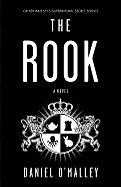
| Publisher: | Little, Brown | |
| Genre: | General, Science Fiction, Fiction, Fantasy, Thrillers, Action & Adventure | |
| ISBN: | 9780316098793 | |
| Pub Date: | January 2012 | |
| Price: | $25.99 |
| Starred | Fiction |
by Daniel O'Malley
The letter the amnesiac protagonist of The Rook finds in her jacket pocket begins: "Dear You. The body you are wearing used to be mine." As the note's author, Myfanwy Thomas, explains, she knew her own life was in danger, and in particular that her memory might be stolen, so she prepared an elaborate set of instructions to help bring herself back up to speed and help her cope when the people who tried to kill her come back for a second attempt. Oh, and there's one other thing her new self should know: she's one of the highest-ranking officers in the Checquy, the secret British agency that deals with supernatural threats to the nation.
Daniel O'Malley's contribution to the growing field of high-octane paranormal spy thrillers is filled with smart flourishes. The Checquy is a centuries-old institution, with a command structure modeled after chess pieces, and clever bits of its history occasionally pop up in the background. As Myfanwy regains her footing, she realizes that her previous self was shy and unassertive, but she decides to take a much more aggressive approach as she resumes the hunt for the traitor (or traitors) within the organization.
O'Malley keeps a humorous edge--including the timely arrival of a sassy American colleague--to Myfanwy's uncertainty without diminishing the threat level. Very few of the plot developments are obvious, and the ones that are don't undermine the suspense. There's some wiggle room for a sequel, but The Rook stands on its own as an entertaining integration of paranormal flash with watertight espionage narrative. --Ron Hogan, founder of Beatrice.com

| Publisher: | Atlantic Monthly Press | |
| Genre: | Fiction, Thrillers | |
| ISBN: | 9780802120175 | |
| Pub Date: | January 2012 | |
| Price: | $25 |
| Mystery & Thriller |
by Val McDermid
In her seventh thriller featuring profiler Dr. Tony Hill and Detective Chief Inspector Carol Jordan, Val McDermid unleashes not one but two serial killers. The first, Jacko Vance, is the duo's worst nightmare come back (after having been caught in The Wire in the Blood); he escapes from prison and is hell bent on, well, retribution. Jordan and Hill have to predict and protect the people, including each other, they feel are most in danger, but Vance seems to be several steps ahead of them. Meanwhile, they also have to hunt another killer doing grisly things to prostitutes. The cases are solved in the end, but Hill and Jordan experience unfathomable loss along the way, and their relationship, as well as their lives, will never be the same.
As usual, McDermid doesn’t flinch from exploring the dark passages of humanity: Vance commits acts so monstrous that readers' stomachs may drop to the floor, like being trapped in a rapidly plunging elevator. But the novel's deft prose, sprinkled with psychological insight and sparks of wit, makes it hard to turn away. McDermid also keeps the pace humming, even with everything that goes on (and there's a lot). The ending is a bit anticlimactic, and the story could probably do with less internal monologue about how much Hill cares for Jordan--a point that is repeatedly and clearly established--but McDermid has thrown such huge obstacles into the already rocky path of her crime-fighting pair that it’ll be interesting to see where they go from here. --Elyse Dinh-McCrilllis, freelance writer/editor, blogging at Pop Culture Nerd
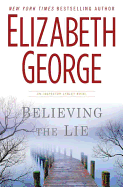
| Publisher: | Dutton | |
| Genre: | General, Fiction, Mystery & Detective | |
| ISBN: | 9780525952589 | |
| Pub Date: | January 2012 | |
| Price: | $28.95 |
| Mystery & Thriller |
by Elizabeth George
Elizabeth George's long-awaited 18th installment in the Inspector Thomas Lynley mystery series sees our Tommy back at New Scotland Yard, having returned from wandering the English countryside mourning his murdered wife. His new illicit relationship with a superior officer is interrupted by a mysterious secret assignment--to look into a drowning that has already been ruled accidental. A powerful patriarch (like Lynley, a peer of the realm) requests further investigation into his own family--most obviously, the recovering drug addict prodigal son. But as Lynley, with the assistance of the reliable Deborah and Simon St. James, delves deeper into this family's history and entanglements, he uncovers myriad lies, betrayals, deceptive identities and plenty of cause for scandal.
Fans of the series will rejoice in rejoining Lynley, the St. Jameses and Sergeant Barbara Havers, who unwillingly undergoes a makeover in this book. George also delivers the fully wrought, sympathetic, very human minor characters her readers have come to expect. Longtime fans may find Deborah's increasingly obsessive distress over her failure to conceive beginning to wear thin; the subject becomes a full-fledged plot thread here. But George's strengths--character development, plot twists and shocking tragedy--continue to shine.
While Believing the Lie can stand alone, series readers will find a deeper appreciation of the complex relationships at play. Look out for a serious cliffhanger at the end, which will leave George's fans panting for the next Lynley episode. --Julia Jenkins, librarian and blogger at pages of julia
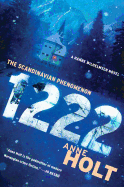
| Publisher: | Scribner | |
| Genre: | Suspense, Fiction, Mystery & Detective, Women Sleuths | |
| ISBN: | 9781451634716 | |
| Pub Date: | December 2011 | |
| Price: | $25 |
| Mystery & Thriller |
by Anne Holt, trans. by Marlaine Delargy
Hanne Wilhelmsen is not your typical detective. For starters, she isn't a detective any more--she's been retired from the police since a bullet to her spine paralyzed her from the waist down. (1222 is the eighth novel featuring Hanne, but the first to be translated into English.) On her way to see a specialist about her injuries, she purposely keeps herself aloof from her fellow travelers, even when their train derails and they are forced to seek shelter in an isolated Norwegian hotel.
A blizzard rages around the hotel, cutting off all forms of communication, and then a prominent priest is found shot dead on the porch. Another man vanishes, and a third is found frozen to death outside the hotel. Is there just one killer? How many more passengers could be targets? When word gets out about Hanne's former job, the hotel staff turns to her for help.
As the storm worsens, putting a strain upon the aging hotel, the tempers of the former train passengers become equally brittle. As accusations start to fly, Hanne must isolate the killer before he or she can strike again.
1222 is a throwback to an earlier era of crime fiction--openly paying homage to such works as Agatha Christie's And Then There Were None. Despite a limited number of suspects, Anne Holt has been able to create a true whodunit. Though the situation is sometimes stretched almost beyond believability, Holt skillfully keeps drawing our attention back to the gritty and authentic Hanne. --Jessica Howard, blogger at Quirky Bookworm
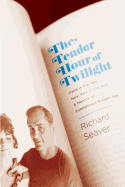
| Publisher: | Farrar, Straus & Giroux | |
| Genre: | Biography & Autobiography, Literary, Personal Memoirs, Editors, Journalists, Publishers | |
| ISBN: | 9780374273781 | |
| Pub Date: | January 2012 | |
| Price: | $35 |
| Biography & Memoir |
by Richard Seaver, edited by Jeannette Seaver
Seaver's story begins in 1950s France, a world with plenty to offer a bright, energetic young man who loved literature and life. Using his Fulbright scholarship to work on his dissertation at the Sorbonne, he met and fell in love with Jeannette, wrote an important essay on the work of Samuel Beckett and co-founded a literary journal, Merlin, that published several writers then largely unknown to American readers, many of whom he was translating himself.
Seaver also first met Barney Rosset in France; later, when he arrived in New York City, he fit in perfectly at Rosset's Grove Press, where he was reunited with Beckett, helping to shepherd his greatest works into print. Things were never quiet at Grove: Naked Lunch, then City of Night, then Last Exit to Brooklyn, closely followed by The Autobiography of Malcolm X and Story of O (which Seaver translated under a pseudonym). All these books faced publication battles, taking a financial toll on the company, but Grove didn't do P&L statements. Luckily, Eric Berne came along, promising that his guidebook to transactional psychology, Games People Play, would sell hundreds of thousands of copies. It did, becoming the book "that saved our skin."
After new financial problems and conflicts, Seaver left Grove. Still, he and Rosset parted as friends, with a "hug as hearty as any I'd ever had." The memoir ends here, in 1971: afterward, Seaver went to Viking, from there to Holt, Rinehart, and Winston and then his own Arcade imprint. He died in 2009 at the age of 82, still publishing the dynamic new voices in literature he loved. --Tom Lavoie, former publisher
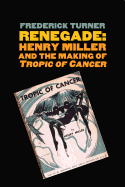
| Publisher: | Yale University Press | |
| Genre: | United States, Literary Criticism, General, Books & Reading, History, American, 20th Century | |
| ISBN: | 9780300149494 | |
| Pub Date: | January 2012 | |
| Price: | $24.95 |
| History |
by Frederick Turner
"I have no money, no resources, no hopes. I am the happiest man alive." For many, these early lines in Tropic of Cancer are akin to "Call me Ishmael." When Henry Miller went to Paris in 1930, he brought one book with him: Leaves of Grass by Walt Whitman (like Miller, a Brooklyn guy). Whitman was a singer, and Miller called Cancer "a song I am singing." Eighty years after its first publication, the book is ripe for reassessment and rediscovery.
Frederick Turner (Culture of Hope) traces the story of Cancer, beginning by exploring the American culture of the period (perhaps in too much detail for some readers) to identify Miller's intellectual inspirations--as well as his unquenchable zest for adventure and improvisation, his often reckless exuberance and his outlaw personality. Miller was 38 and a failed writer when he arrived in Paris; he came under the influence of several artists and writers, especially Anais Nin, who, Turner shows, was even more influential in the writing of Cancer than Miller's wife, June. Nin also helped him get the book published at Jack Kahane's Obelisk Press in 1934 (including providing financial backing). That first edition's striking cover, done by Kahane's son, with a crab holding a woman's body in its claw, has become famous. Turner's claim that Tropic of Cancer was "more radically American" than anything published that year by Miller's contemporaries--even Faulker or Hemingway--and remained so for many years after, is debatable. But Renegade shows how, though the book's shock value has worn away, its literary significance, what Norman Mailer called its "revolution in consciousness," has endured. --Tom Lavoie, former publisher

| Publisher: | University of Chicago Press | |
| Genre: | Memory Improvement, Modern, History, Self-Help, Life Sciences, Personal Growth, Neuroscience, 20th Century, Science | |
| ISBN: | 9780226902586 | |
| Pub Date: | January 2012 | |
| Price: | $30 |
| Psychology & Self-Help |
by Alison Winter
My first memory is of sitting on a porch as a three-year-old and getting leapt upon by a hissing, snarling cat. I have a picture of myself, taken moments before the feline assault. The story is well-preserved in my family. But is this my legitimate first memory or was it planted? If the memory is accurate, does the distinction matter? Can a memory be accurate? Alison Winter's research into historical and modern ideas of what constitutes memory, and the science of understanding how it works, have resulted in this fascinating account of the history of a shifting concept. Winter--associate professor of history at the University of Chicago and the author of Mesmerized: Powers of Mind in Victorian Britain--has plenty of grist for the mill, given that reliance on accounts from times past essentially means crafting an account of memory based on memory.
She makes smart use of this meta-nonfictional opportunity in Memory, never falling too deeply into the rabbit hole but also acutely aware of her shaping by present-day cultural norms and "truths" about memory. Of particular interest is the rise of "truth serum" as a supposedly guaranteed path to retrieving 100% accurate memories and its fall from grace--followed by another rise, an ongoing cycle of acceptance and rejection by the medical community determined largely by societal circumstances at the time. Upon reaching the chapter on the False Memory Syndrome Foundation--a group dedicated to ferreting out a tendency by the medical support community to draw out "repressed memories" of trauma that are, in fact, "untrue"--readers may find their copies have more passages underlined than not. --Matthew Tiffany, counselor, writer for Condalmo

| Publisher: | Basic Books | |
| Genre: | Information Technology, General, Computers, Technology & Engineering | |
| ISBN: | 9780465021420 | |
| Pub Date: | January 2012 | |
| Price: | $25.99 |
| Science |
by David Weinberger
The growth of the Internet as both a means of transmitting information and a means of reconfiguring that information in new ways, at new speeds, has grown exponentially since the inception of the World Wide Web in 1990. Studies of the effects of this new medium on knowledge often, unsurprisingly, fall into "the Internet is good/neutral" or "the Internet is making us stupid" camps, depending on whether they're published on paper or online. Adding to this growing body of scholarship is David Weinberger's Too Big to Know--subtitled Rethinking Knowledge Now That the Facts Aren't the Facts, Experts Are Everywhere, and the Smartest Person in the Room Is the Room--focusing somewhat less on the effects of the Internet on the mind and culture than on the Ouroboros of information and the Web itself.
Weinberger, researcher at Harvard University’s Berkman Center for the Internet and Society, eschews the pedantic tone of similar books for a studied reflection on the Web, delivered with a wink. Building on Al Gore's stated belief that the Internet is the best hope for democracy, Weinberger notes that this is not a new idea: "The picture of reasonable people sitting together, talking over their differences in a respectful, honest way is the image on the Enlightenment's own Hallmark Card." His position is somewhat more pragmatic than Gore's, however, with considerable space given over to delineating how information management has transformed in recent years, shifting from a form where "facts" are published to a more fluid, dynamic networking of those facts. Weinberger's studies provide clearly lettered signposts in the directions future studies would do well to aim themselves. --Matthew Tiffany, counselor, writer for Condalmo
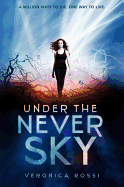
| Publisher: | HarperCollins | |
| Genre: | Love & Romance, Science Fiction, Juvenile Fiction | |
| ISBN: | 9780062072030 | |
| Pub Date: | January 2012 | |
| Price: | $17.99 |
| Children's & Young Adult |
by Veronica Rossi
Will the future bring more technology--or less? In Veronica Rossi's adventurous debut novel, the answer is both: Aether storms have ravaged the world for centuries, forcing a divide among mankind.
Aria, a Dweller, lives in a highly technological society. Her physical world is limited to a large enclosed Pod. Like all Dwellers, Aria spends her time in the Realms, virtual realities so lifelike that they are proclaimed to be "better than real." Peregrin, or Perry, is an Outsider. Life outside of the Pods is difficult: almost no technology, dangerous elements, little food and constant struggles against other tribes. Aria and Perry become unlikely allies after tragedy finds Aria exiled from the Pods. Perry agrees to help Aria search for a way to regain access to the Pods in return for Aria's help in finding his kidnapped nephew.
The first in a planned trilogy, Rossi's novel is breathtaking. The author crafts the vastly different worlds of the Dwellers and Outsiders equally well and credibly. Perhaps the most impressive aspect is the love story between Aria and Perry. Rossi shows us an emotional struggle based on their pasts and their differences, rather than a stereotypical love triangle or meddlesome friends or family. This story of adventure, discovery and redemption kicks off a trilogy strong enough to follow in the footsteps of The Hunger Games. --Kyla Paterno, retail coordinator and blogger, Garfield Book Company
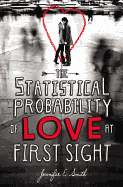
| Publisher: | Poppy/Little, Brown | |
| Genre: | Girls & Women, Love & Romance, Juvenile Fiction, Family, Marriage & Divorce | |
| ISBN: | 9780316122382 | |
| Pub Date: | January 2012 | |
| Price: | $17.99 |
| Children's & Young Adult |
by Jennifer E. Smith
Jennifer E. Smith's (You Are Here) novel will reel you in with its fun title and reward you with a heartwarming tale of first love.
Seventeen-year-old Hadley Sullivan missed her flight to London by four minutes. Now she's going to be late to her father's second wedding--to a woman she's never met. Fortunately, the twists of fate that left Hadley stranded at Kennedy Airport give her a chance to connect with Oliver, a charming British boy sitting two seats over on her next flight. The two instantly spark from the moment Oliver helps her with her suitcase. Hadley and Oliver, who meet by serendipity, are reminiscent of the title characters in David Levithan and Rachel Cohn's Dash and Lily's Book of Dares. The chemistry between them comes through when an elderly woman mistakes the two for a long-established couple. The woman asks how they met, giving Oliver license to slyly retell meeting Hadley hours before as if the event had occurred years ago--with Hadley chiming in and playing along.
Within the span of 24 hours, Oliver has charmed Hadley beyond the realm of friendship. But falling in love with him also comes with obstacles that prevent her from keeping him. This fun, standalone novel about first love and second chances will leave inspire readers to keep an eye open for true love. --Adam Silvera, a bookseller and intern at Figment
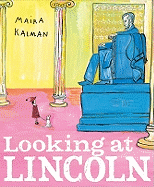
| Publisher: | Nancy Paulsen/Penguin | |
| Genre: | People & Places, United States, Juvenile Nonfiction, Political, History, Biography & Autobiography, United States - Civil War Period | |
| ISBN: | 9780399240393 | |
| Pub Date: | January 2012 | |
| Price: | $17.99 |
| Children's & Young Adult |
by Maira Kalman
Maira Kalman's (Next Stop Grand Central) gift for choosing the telling detail as a way into her stories feels especially well suited to a picture-book biography of Abraham Lincoln.
The narrator is on her way to breakfast when she sees "a very tall man" who "reminded me of someone, but I could not think who." As she pays for her pancakes "with a Lincoln and two Washingtons," she realizes the man she passed looked just like Abraham Lincoln. Thus begins her quest to learn more about our 16th president. The seeds of this project began with a blog Kalman did for the New York Times. But the crafting of the scenes she has selected, rendered in her signature gouache, make this a moving homage.
Kalman zooms in on the kinds of quirky trivia that kids will devour: vanilla cake was Lincoln's favorite, and he always had an apple on his desk--though "he was often too busy thinking to eat"--and with his hat on, Lincoln was seven feet tall. But she also mentions milestone events, such as the president's meetings with Sojourner Truth and Frederick Douglass, as well as his Gettysburg Address. The cumulative effect of the details Kalman selects delivers an emotional wallop of an ending. The narrator escorts us past the capital's cherry trees in full blossom, to the foot of the Lincoln Memorial, and says, "You can look into his beautiful eyes. Just look." Children will feel as though they're standing alongside her and that they, too, can see President Lincoln more clearly. A touching and personal tribute. --Jennifer M. Brown, children's editor, Shelf Awareness